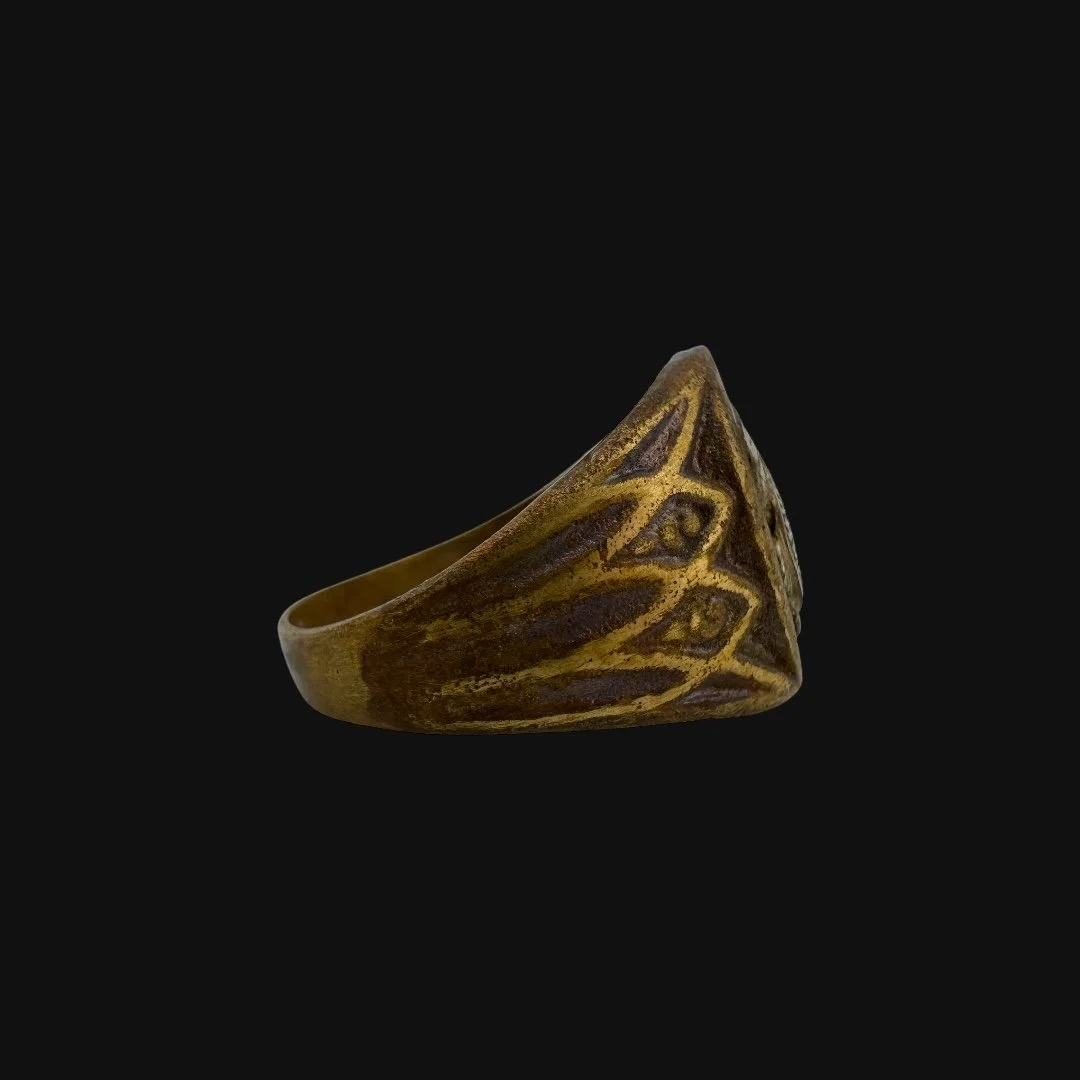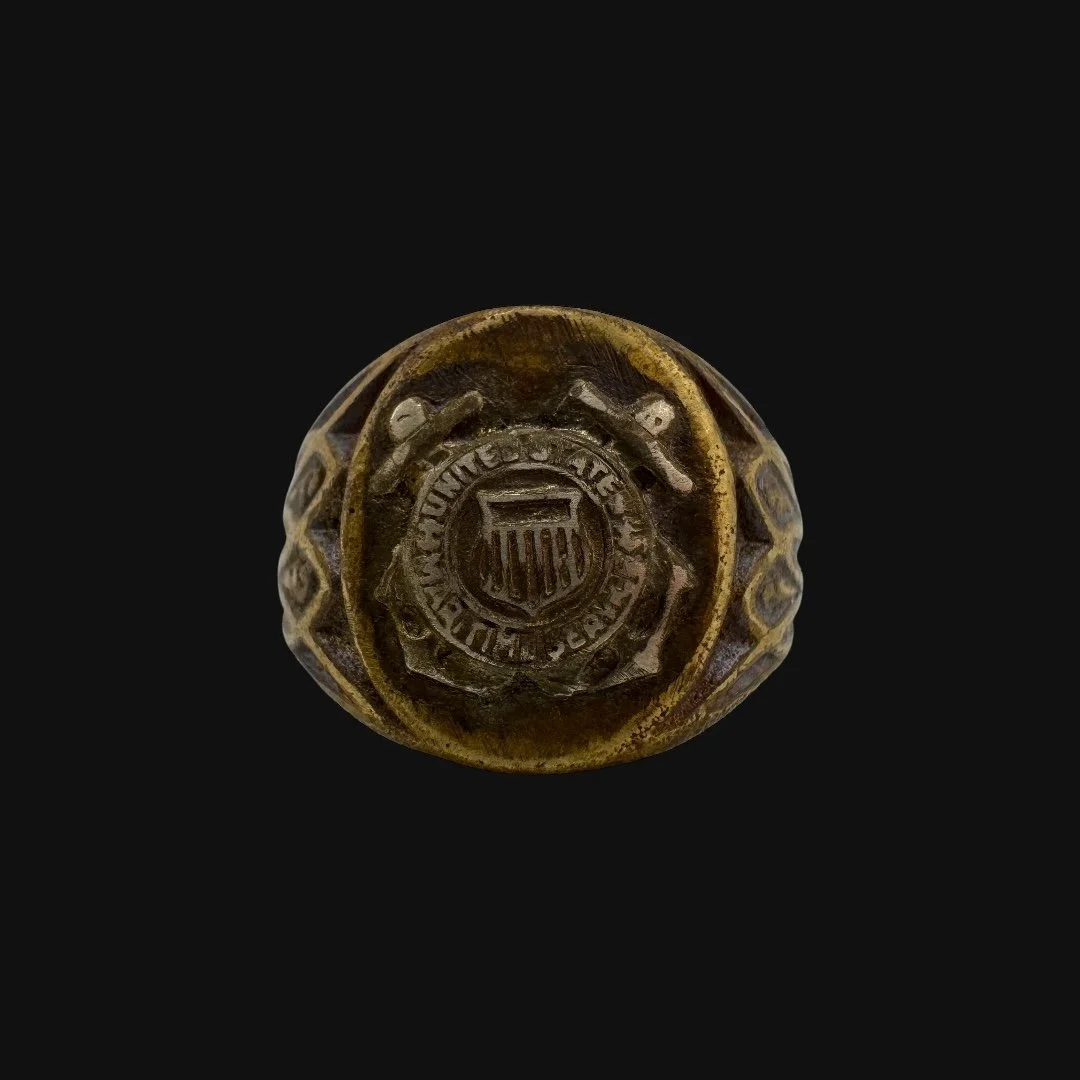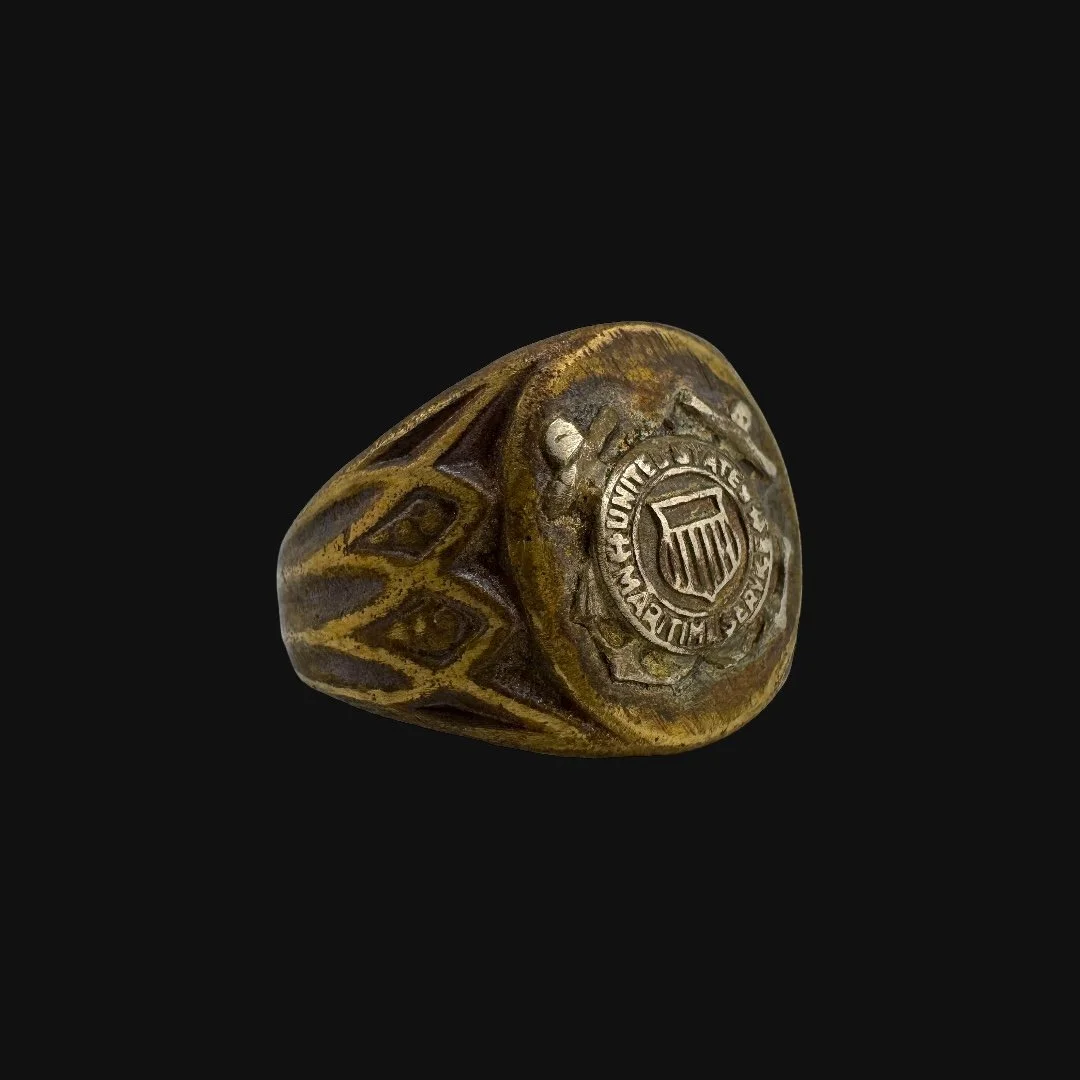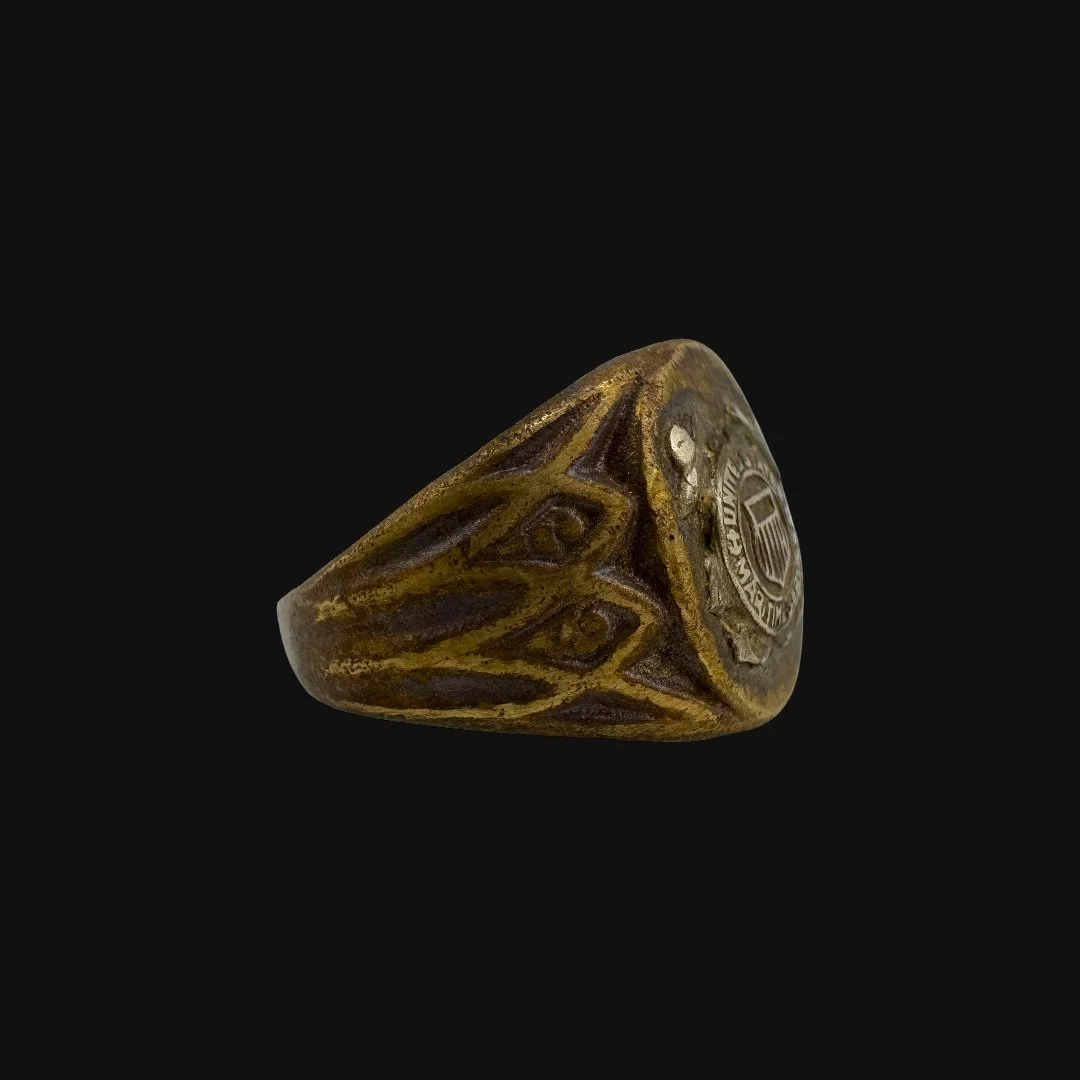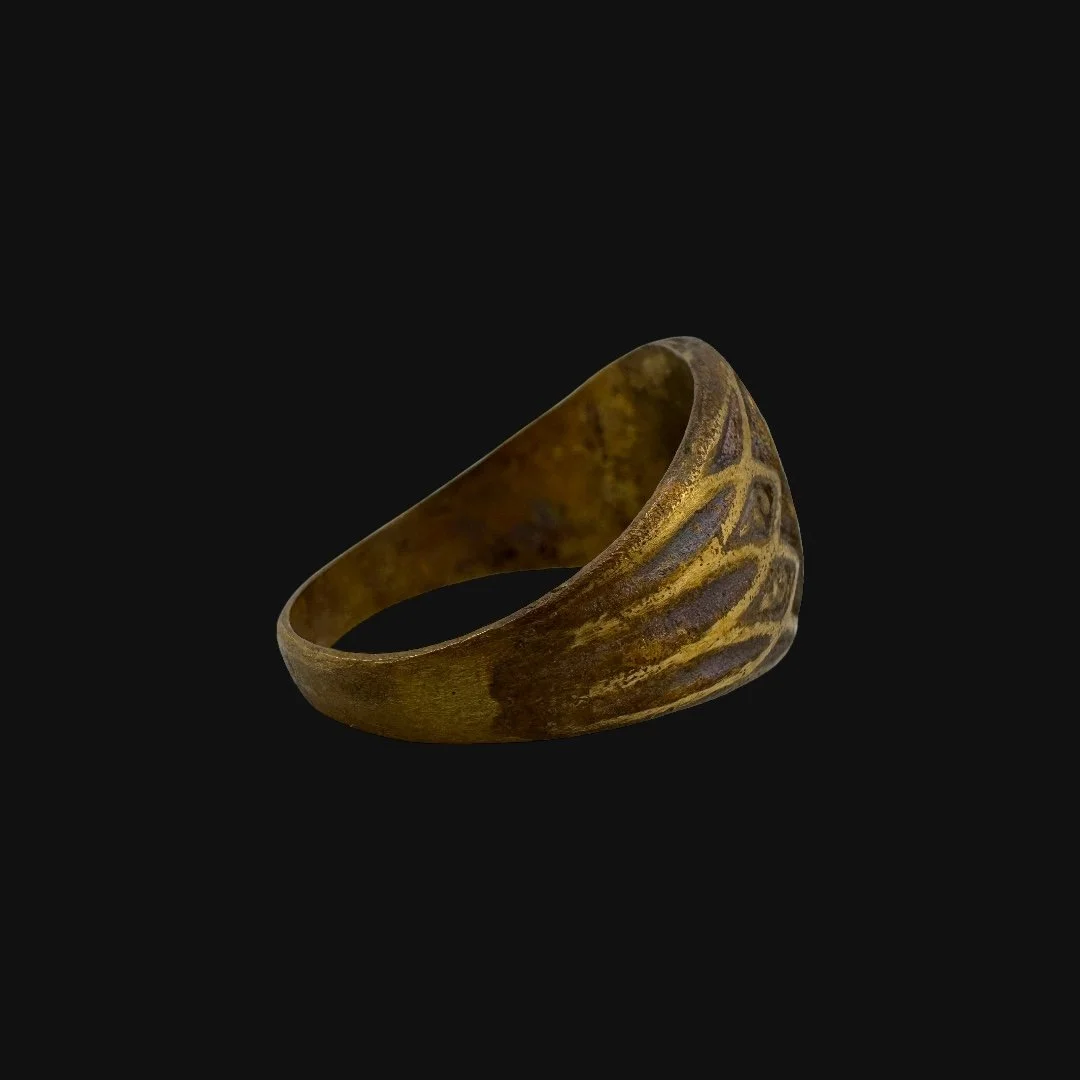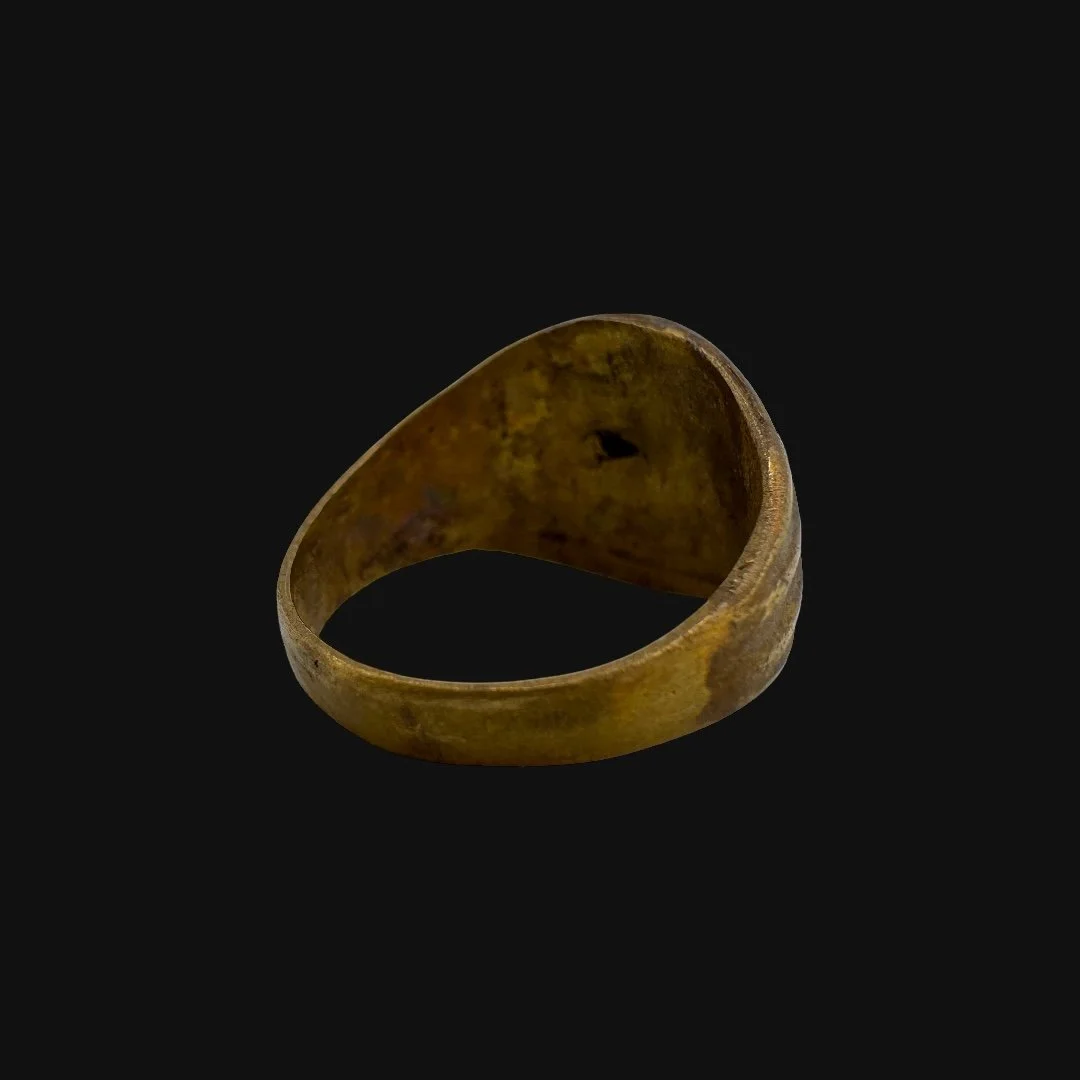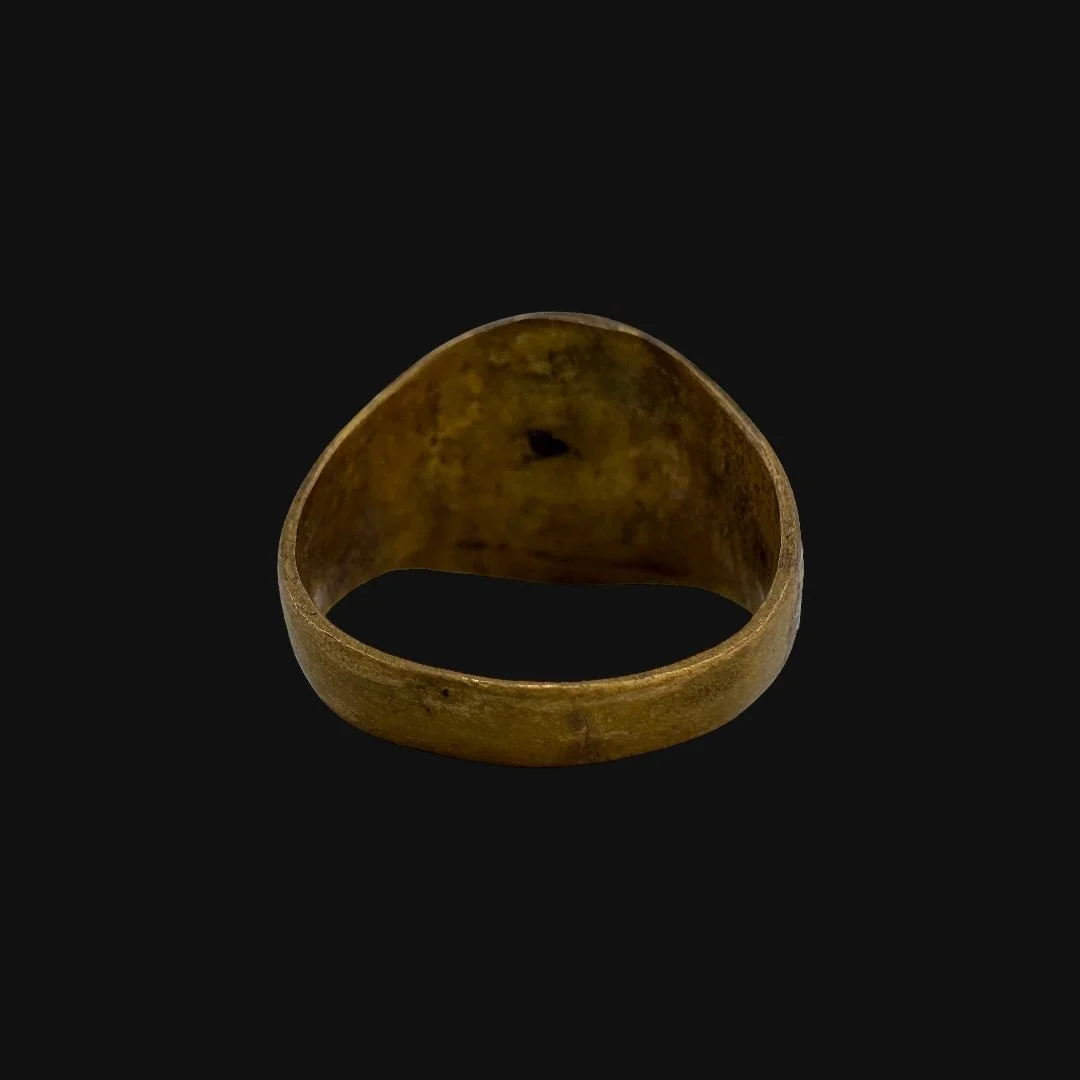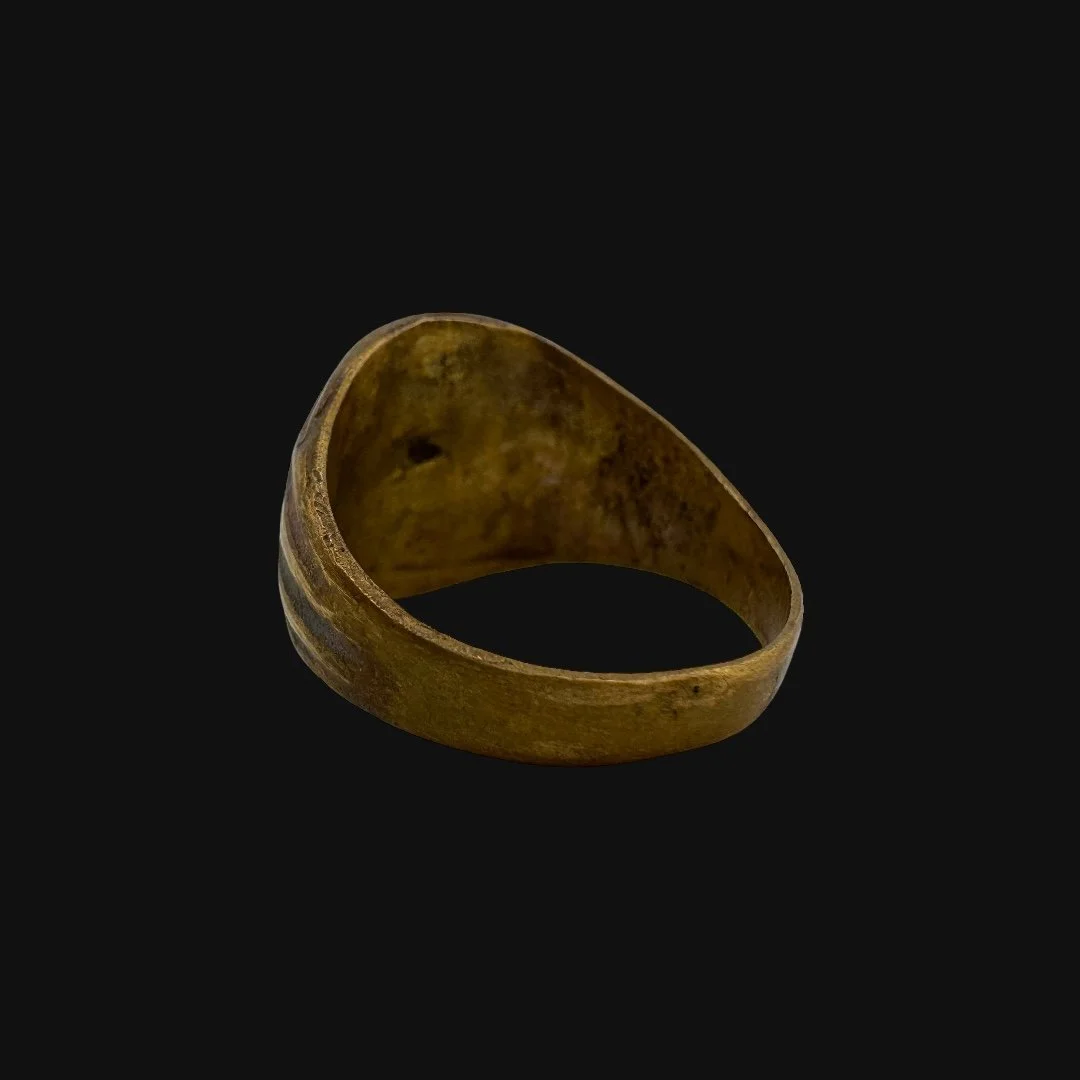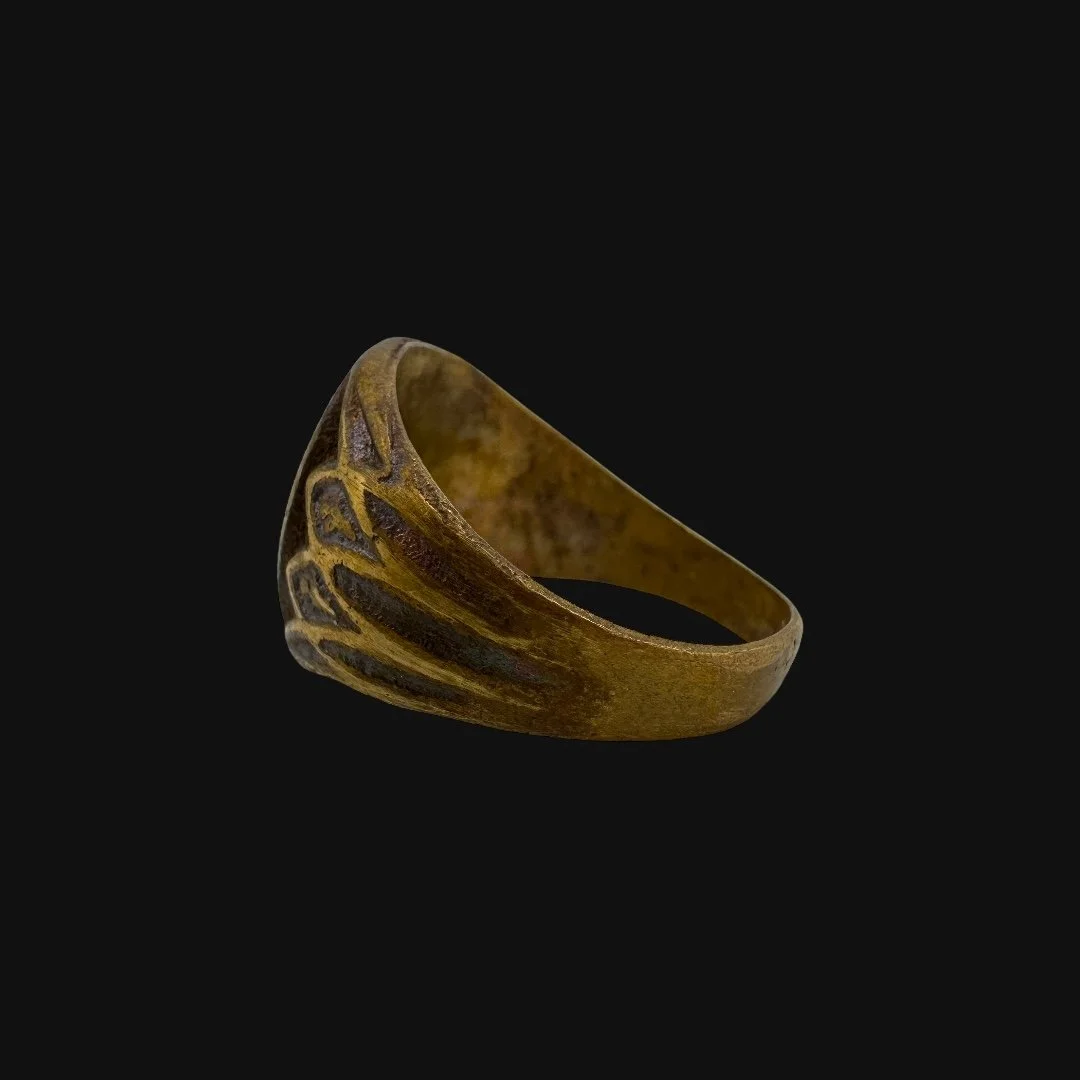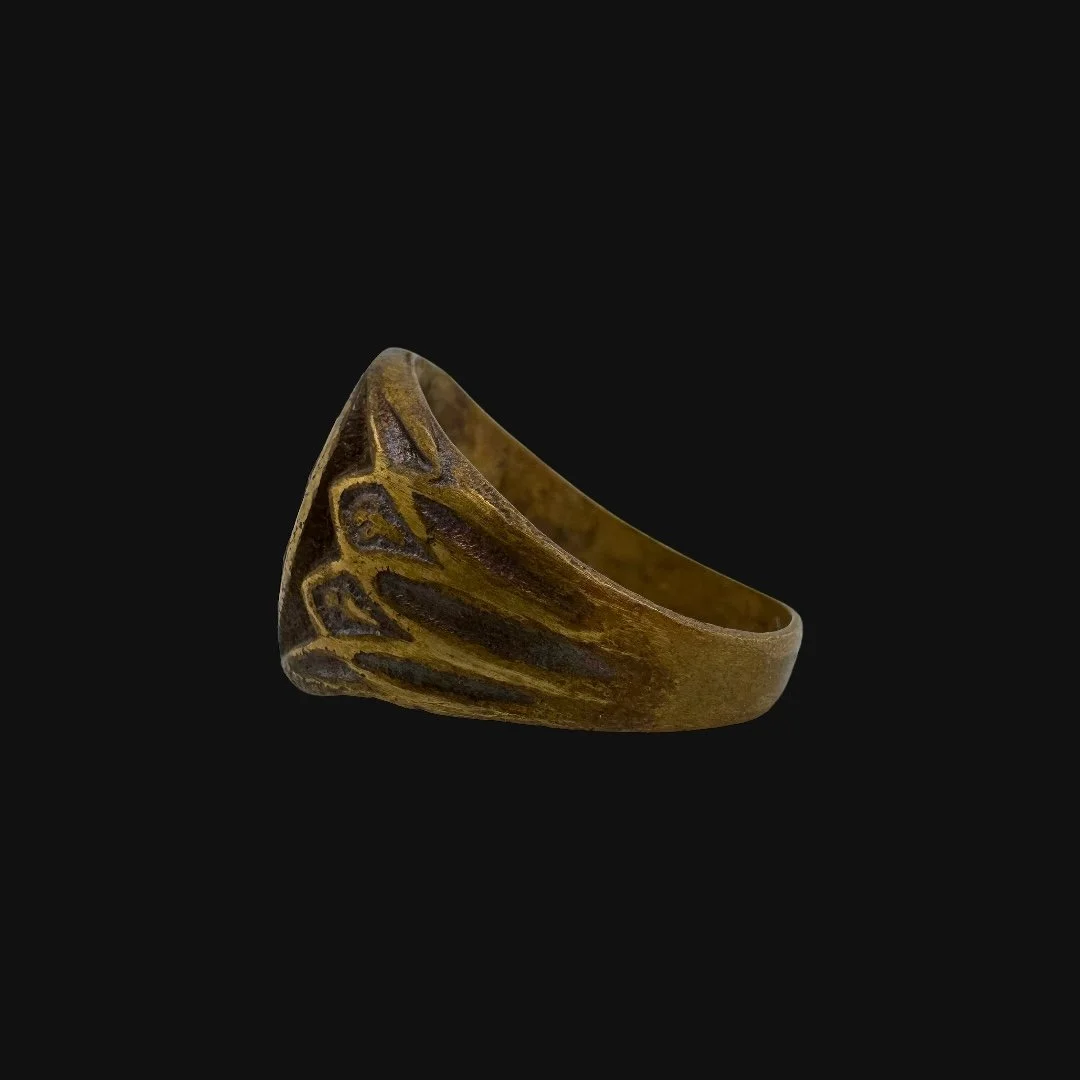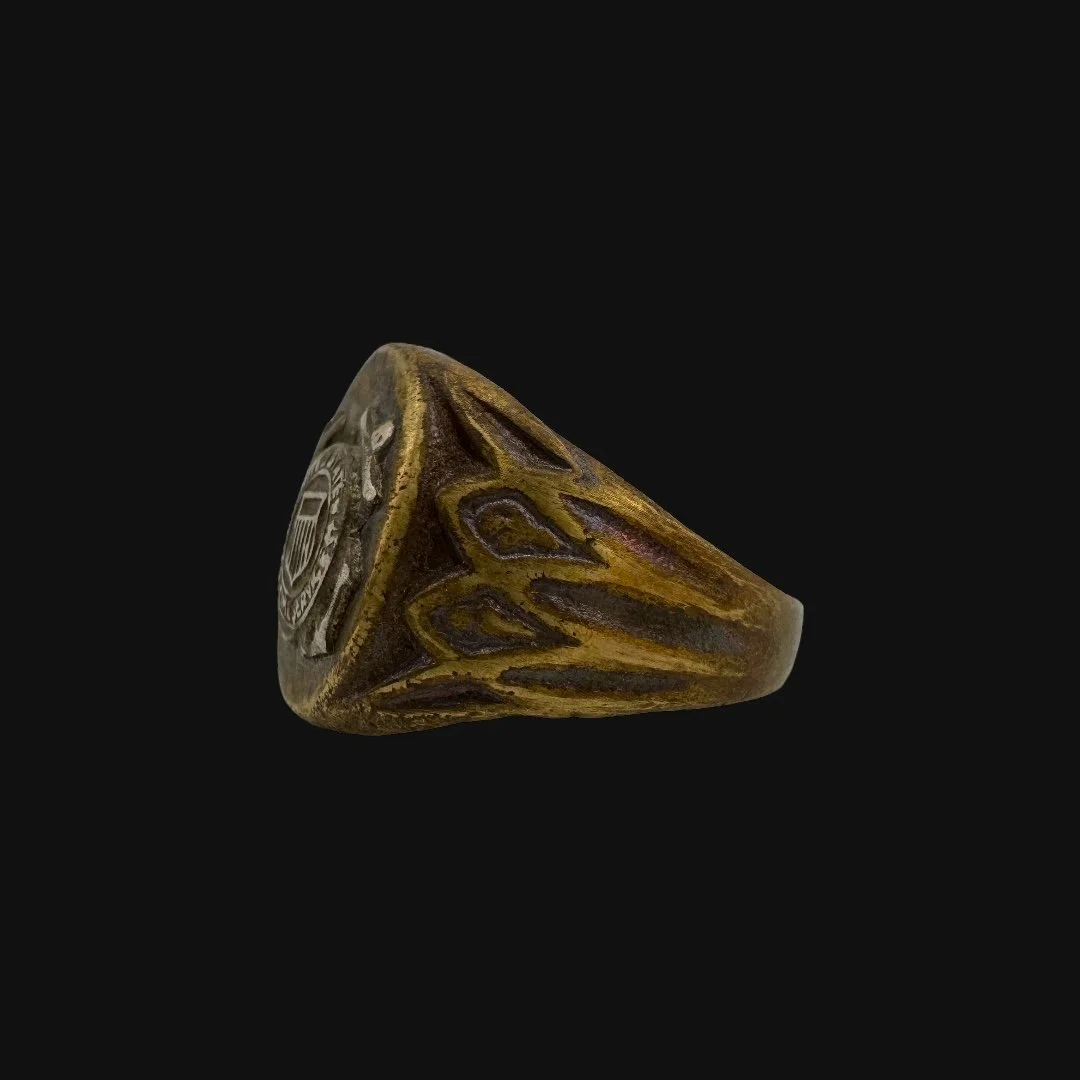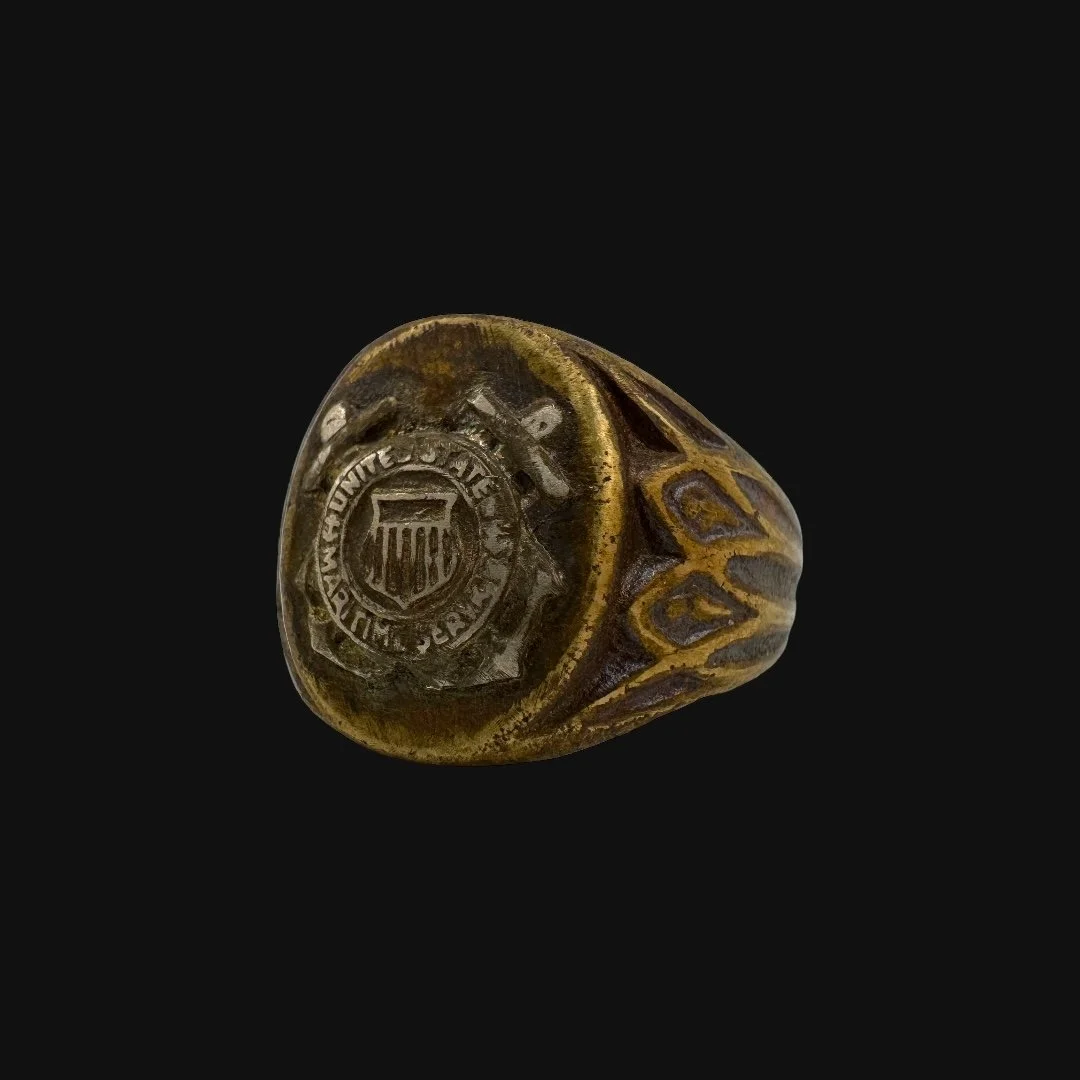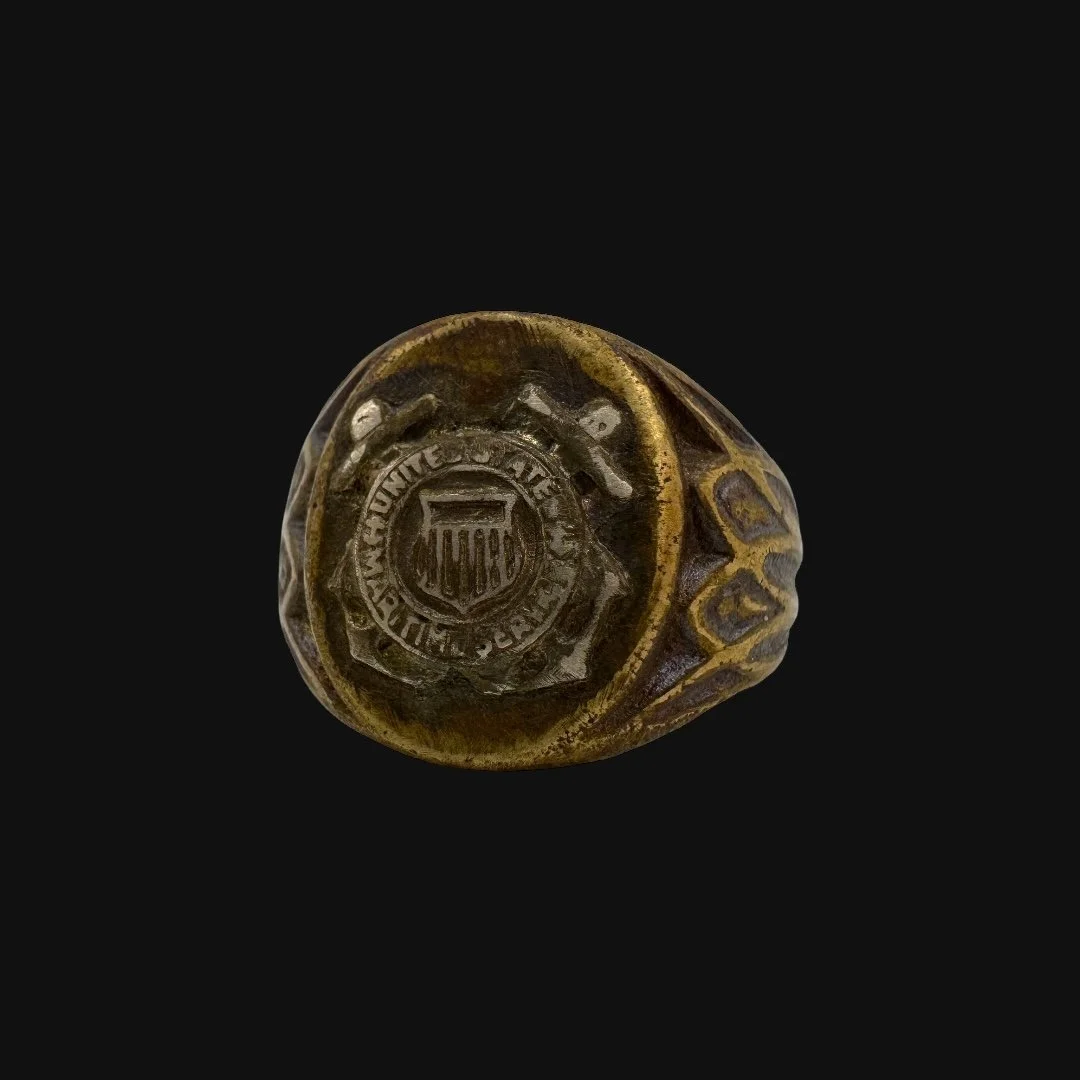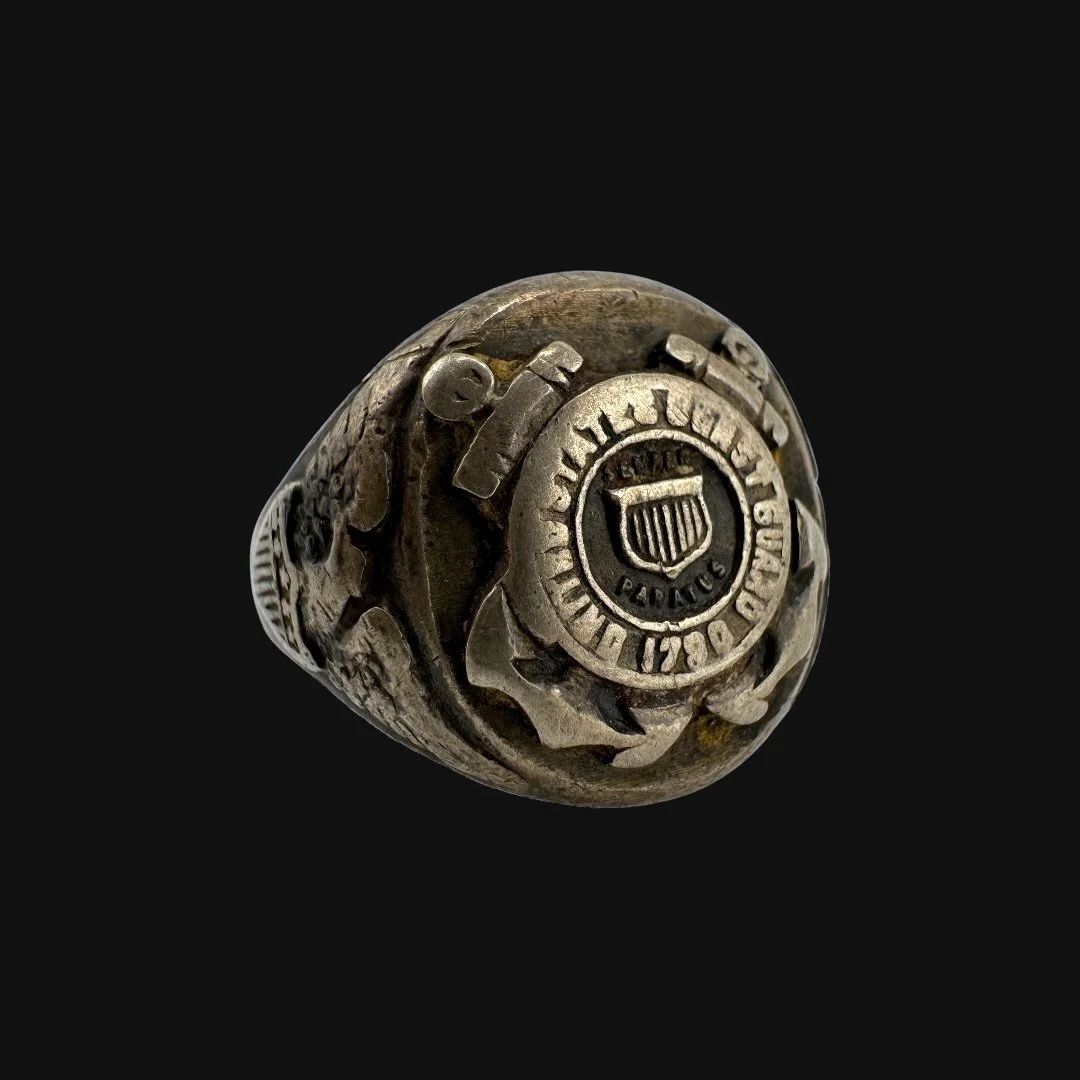 Image 1 of 14
Image 1 of 14

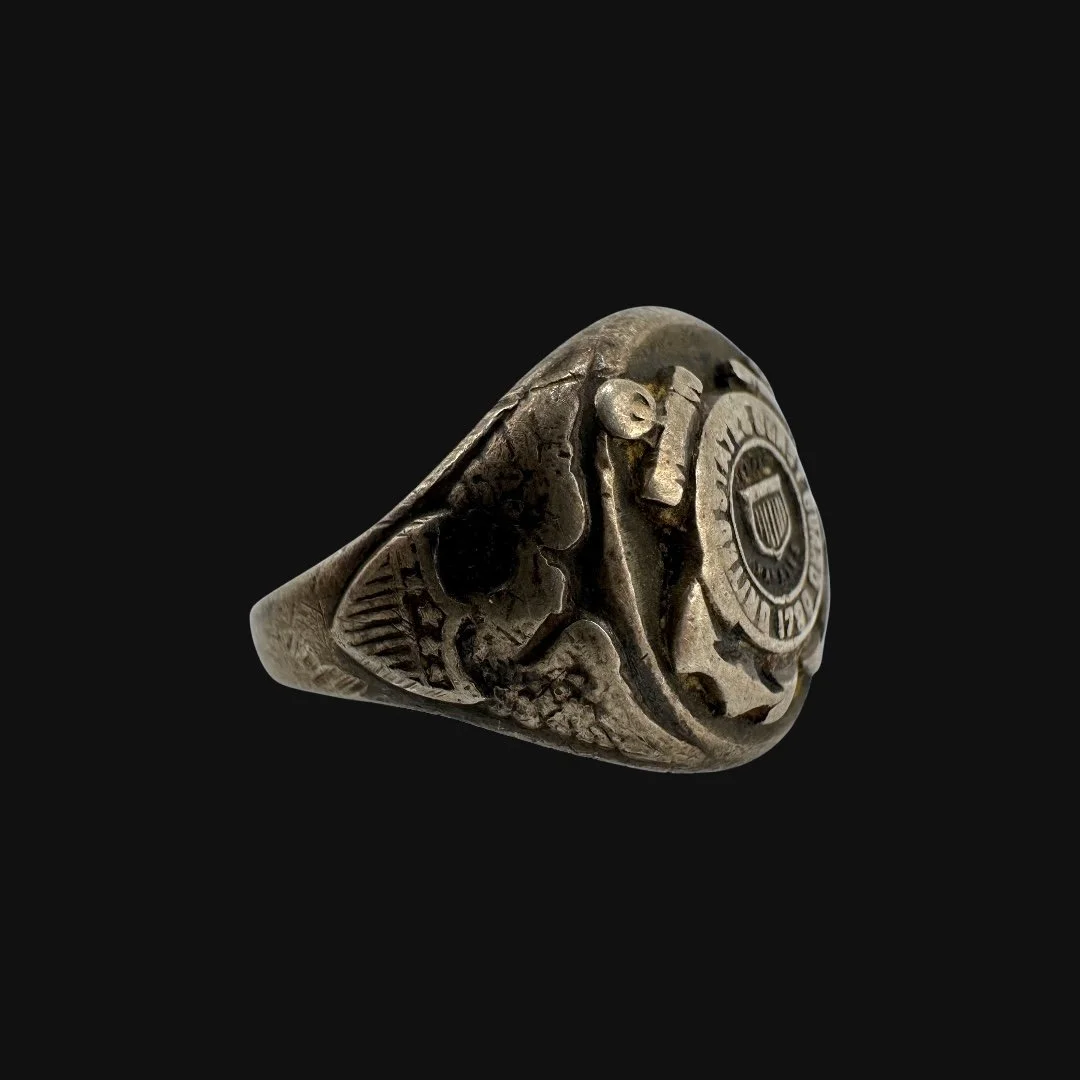 Image 2 of 14
Image 2 of 14

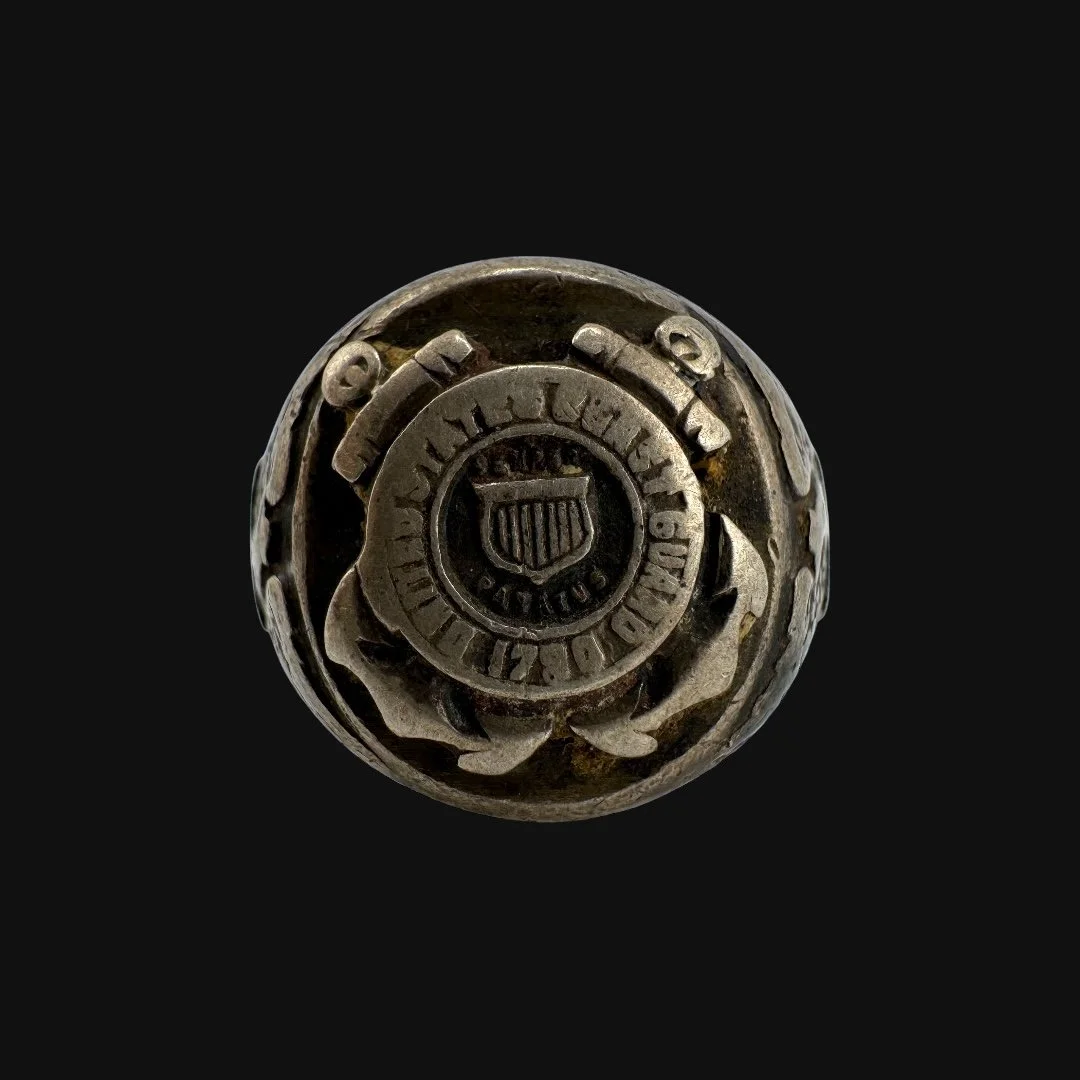 Image 3 of 14
Image 3 of 14

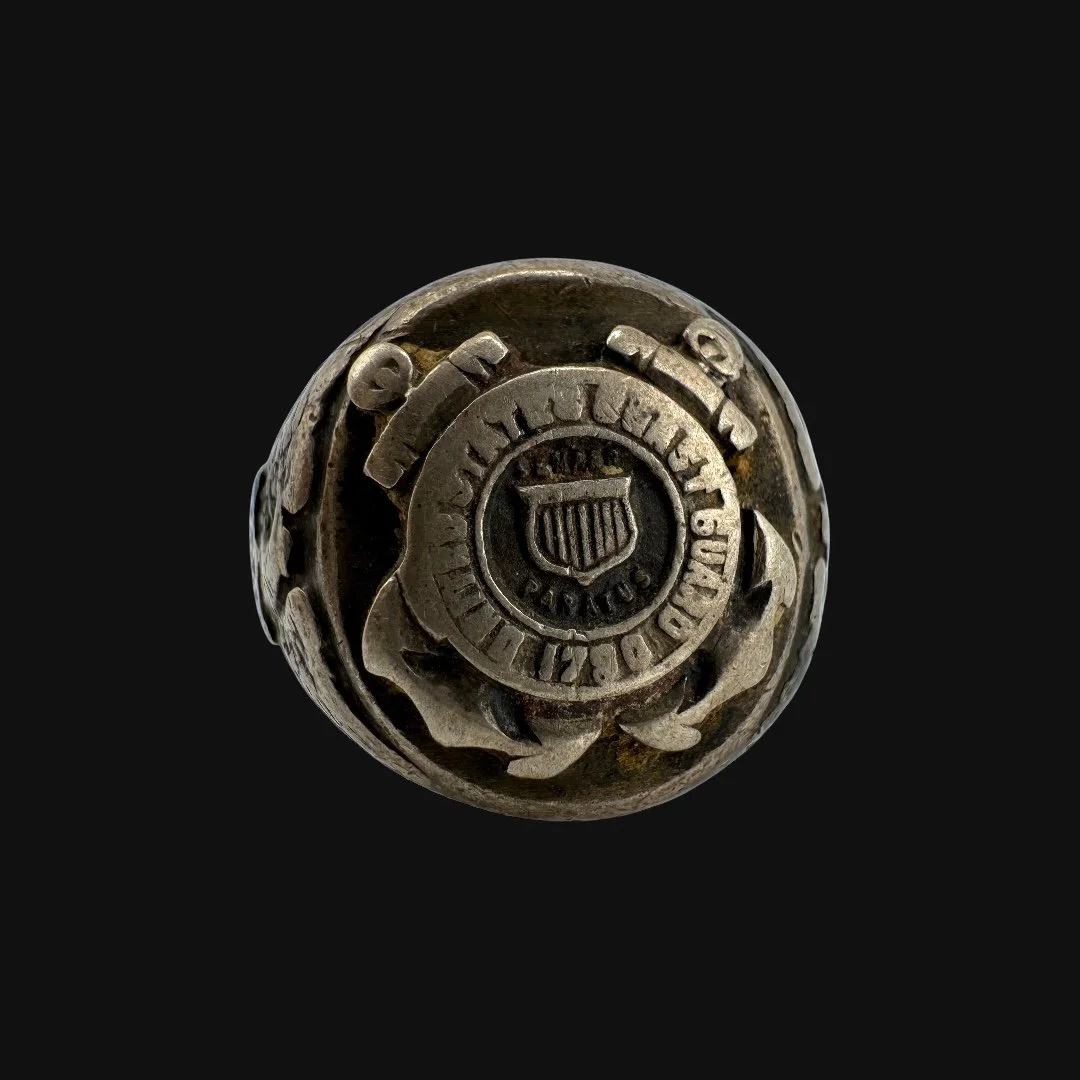 Image 4 of 14
Image 4 of 14

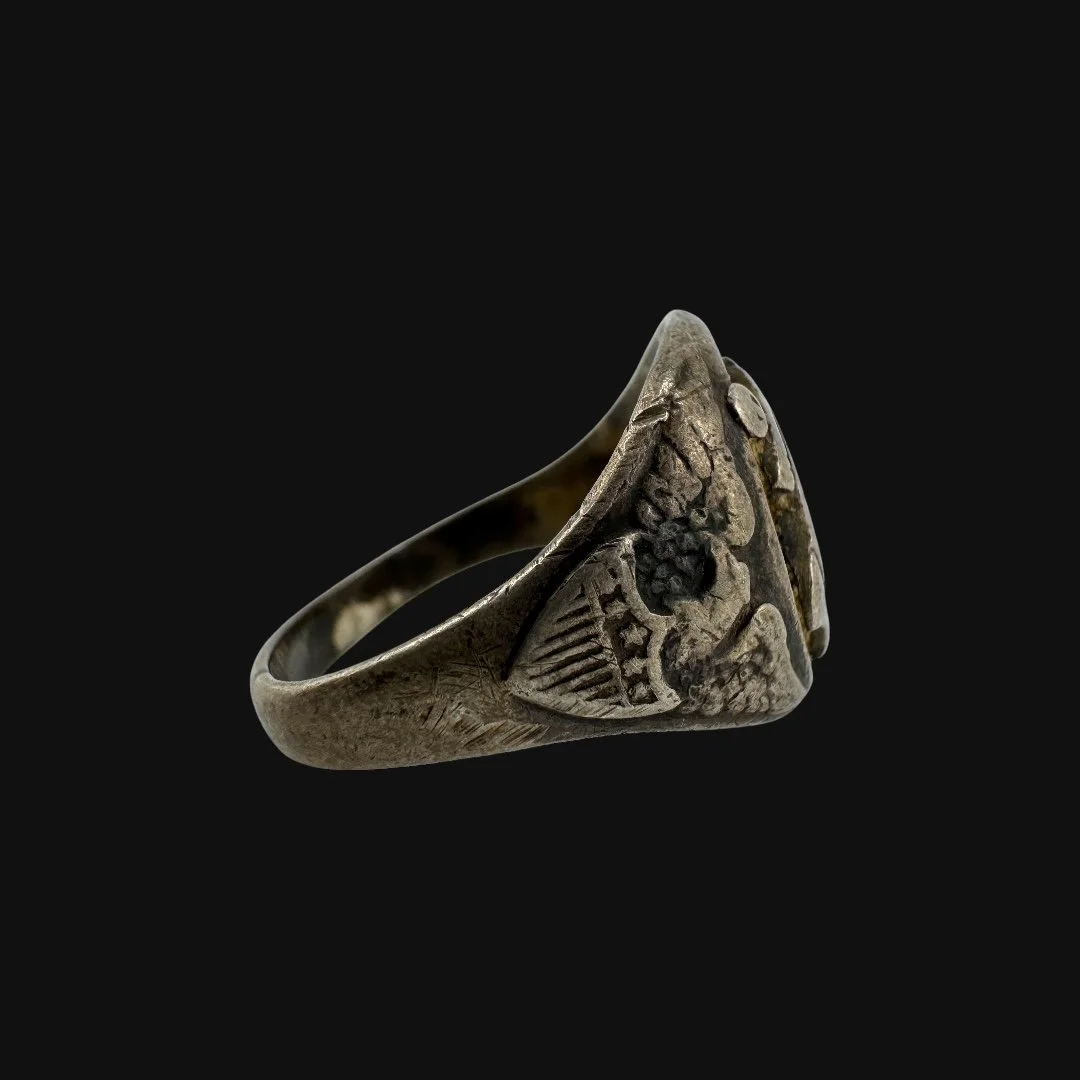 Image 5 of 14
Image 5 of 14

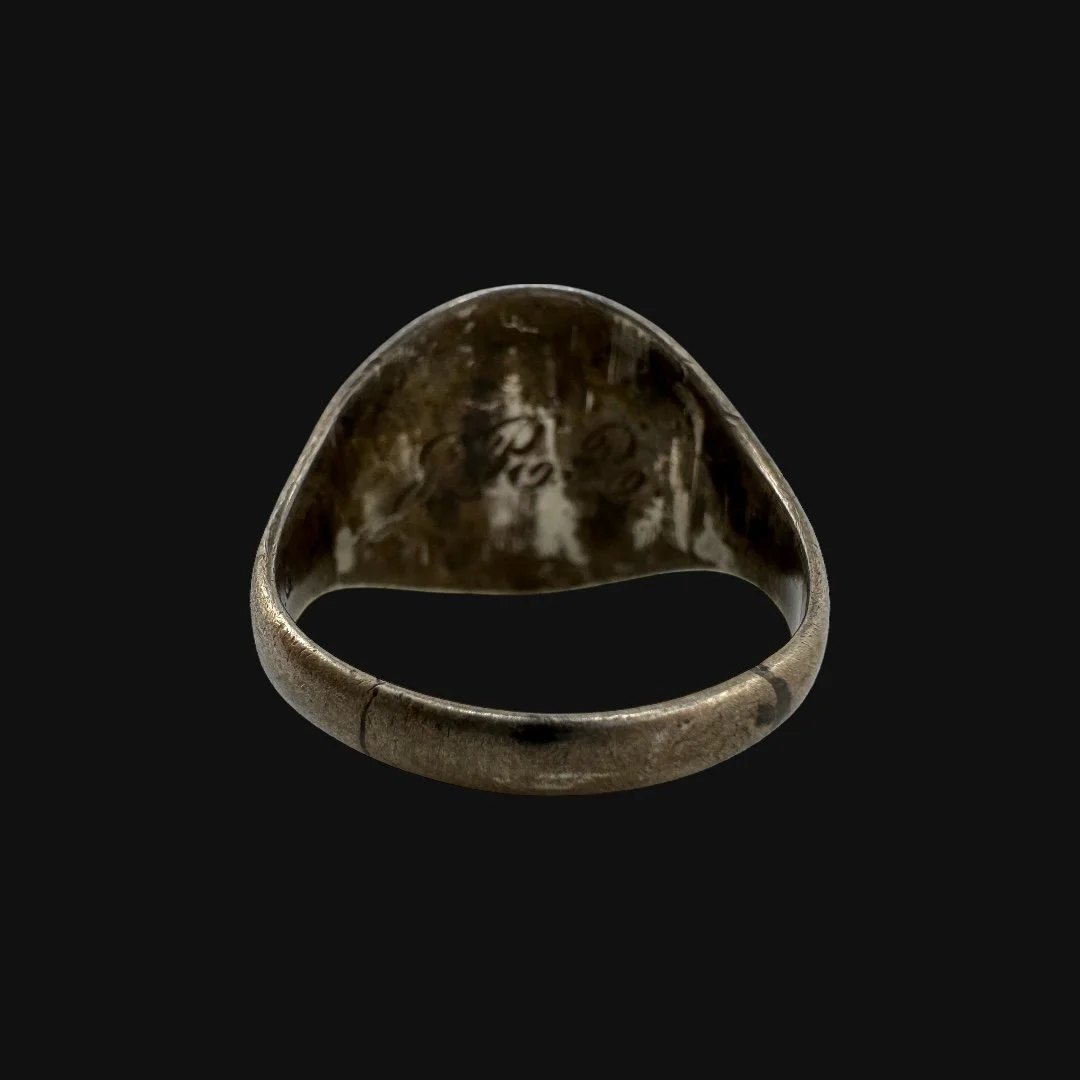 Image 6 of 14
Image 6 of 14

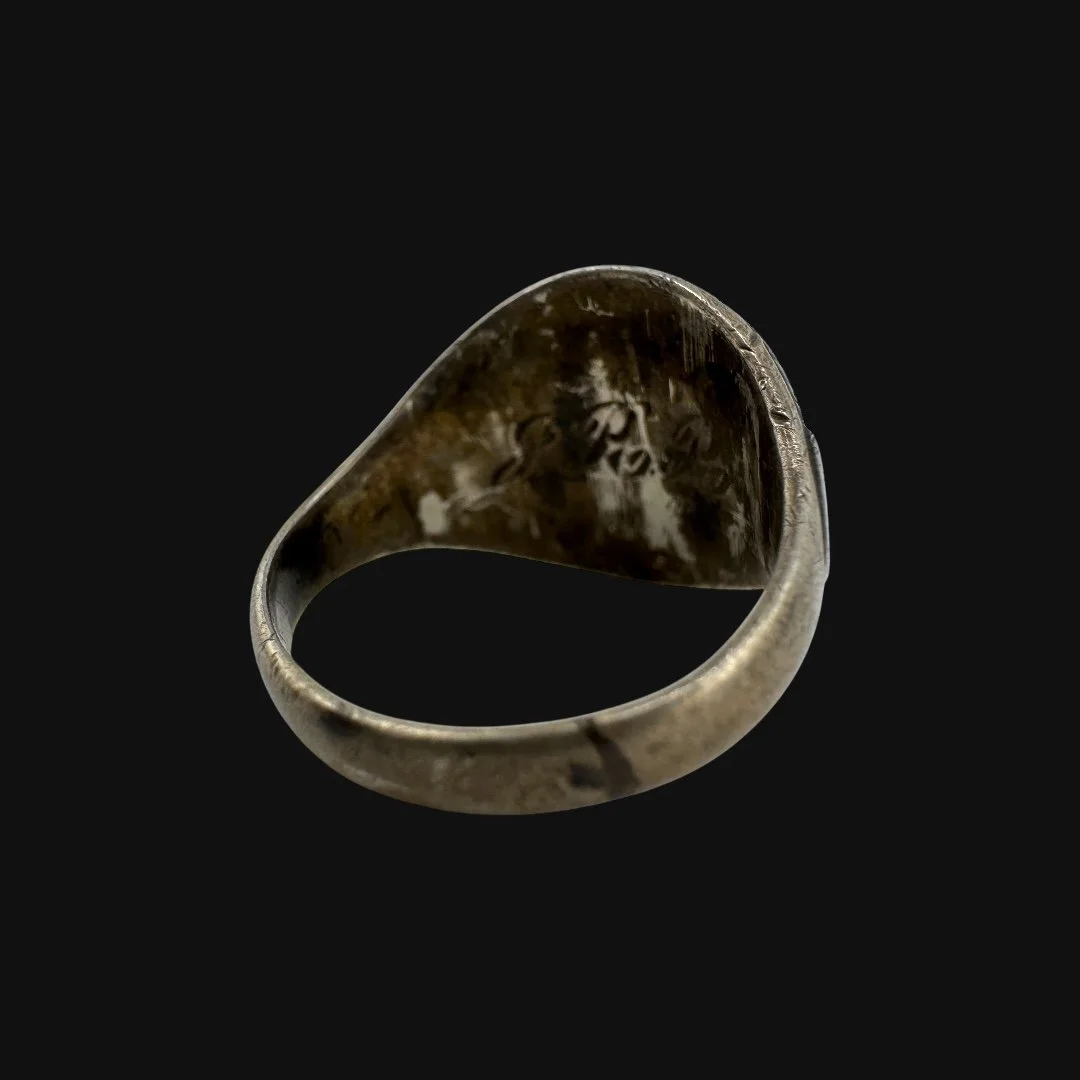 Image 7 of 14
Image 7 of 14

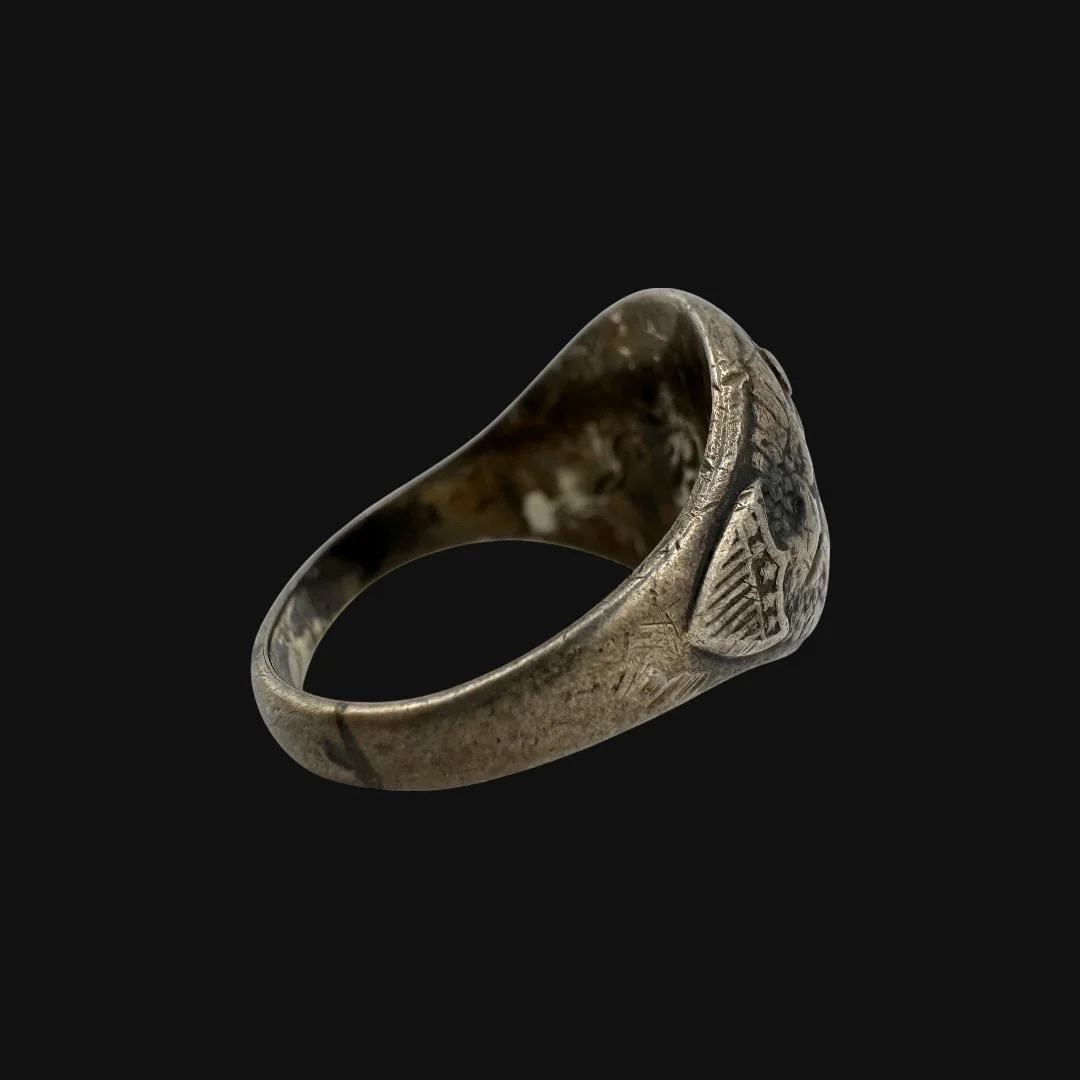 Image 8 of 14
Image 8 of 14

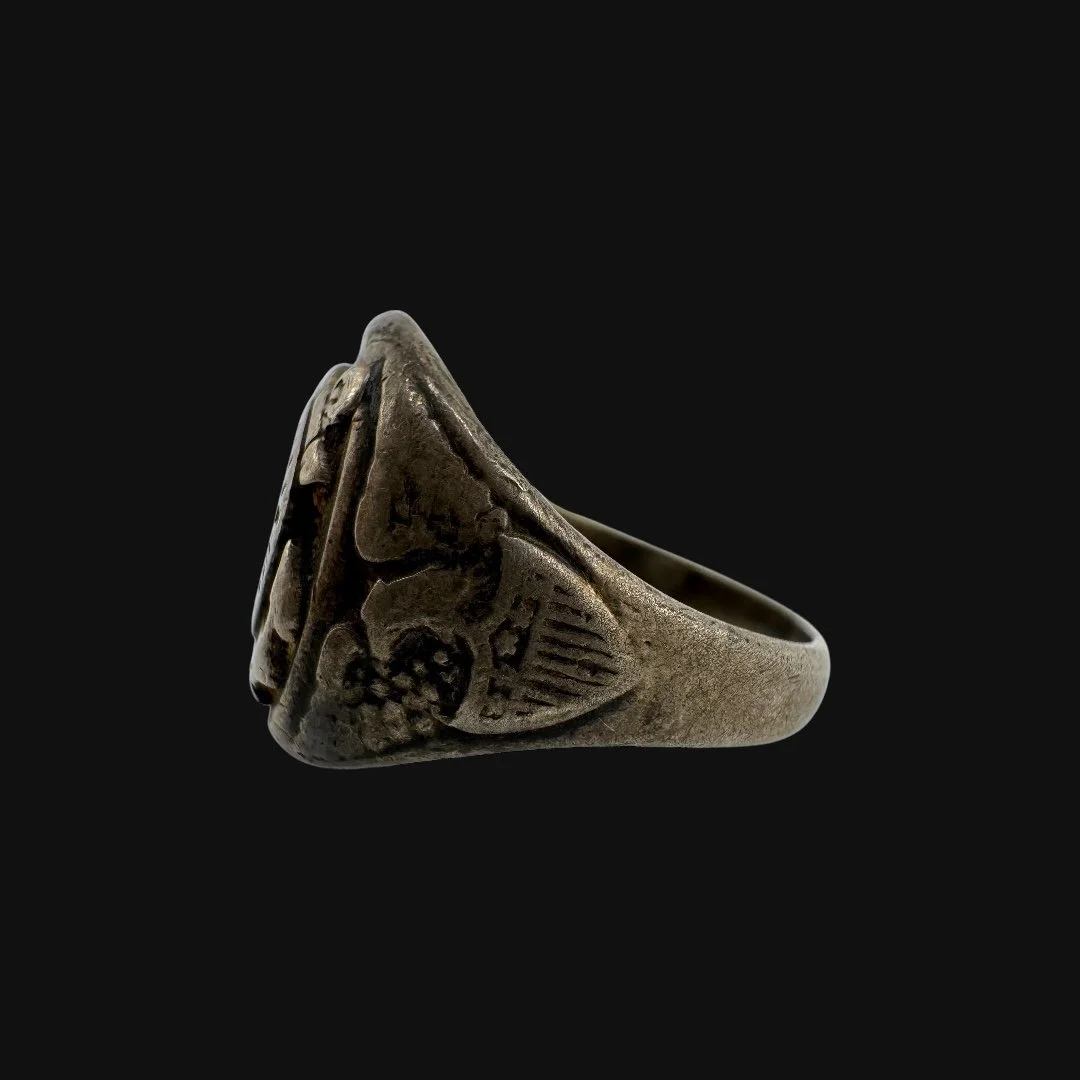 Image 9 of 14
Image 9 of 14

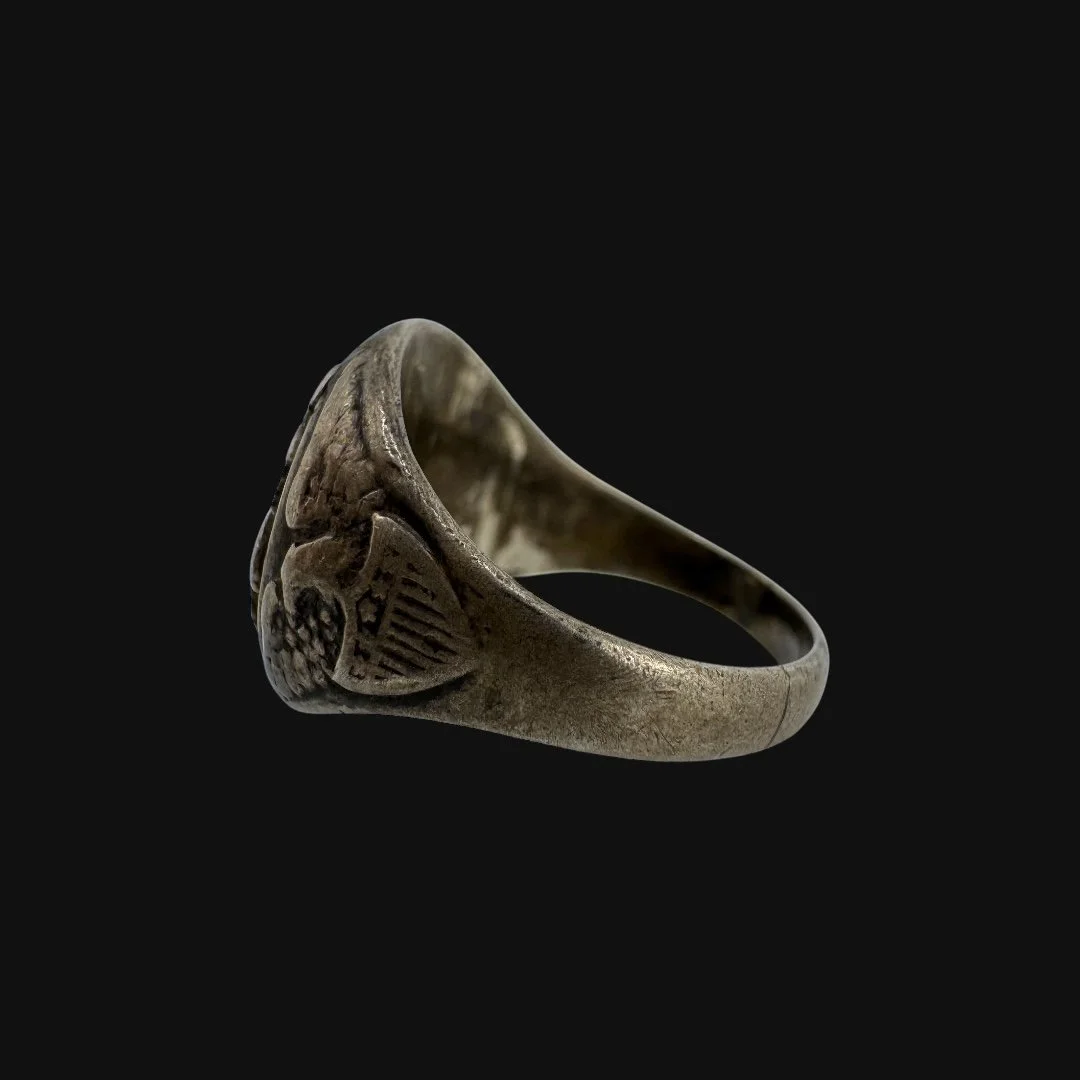 Image 10 of 14
Image 10 of 14

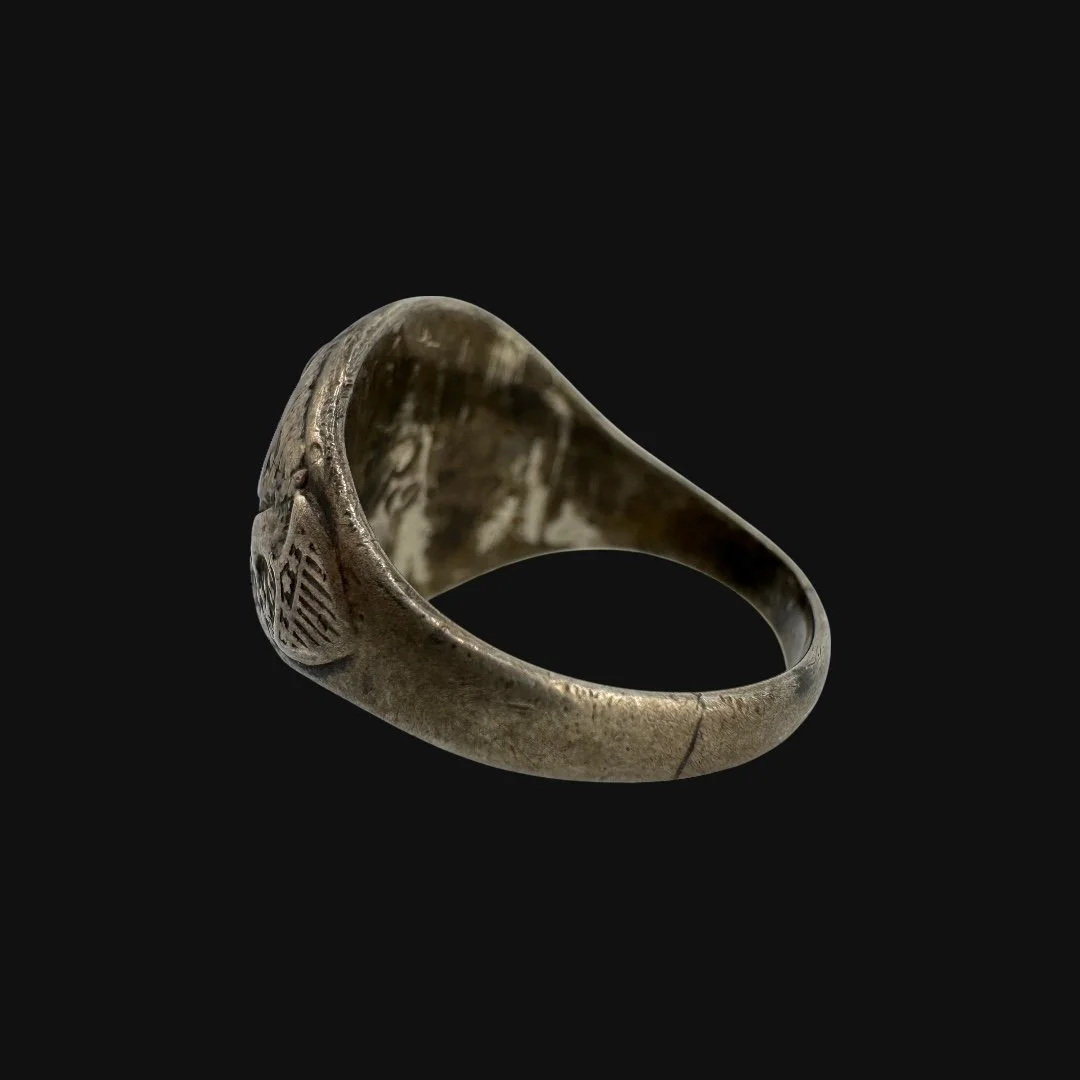 Image 11 of 14
Image 11 of 14

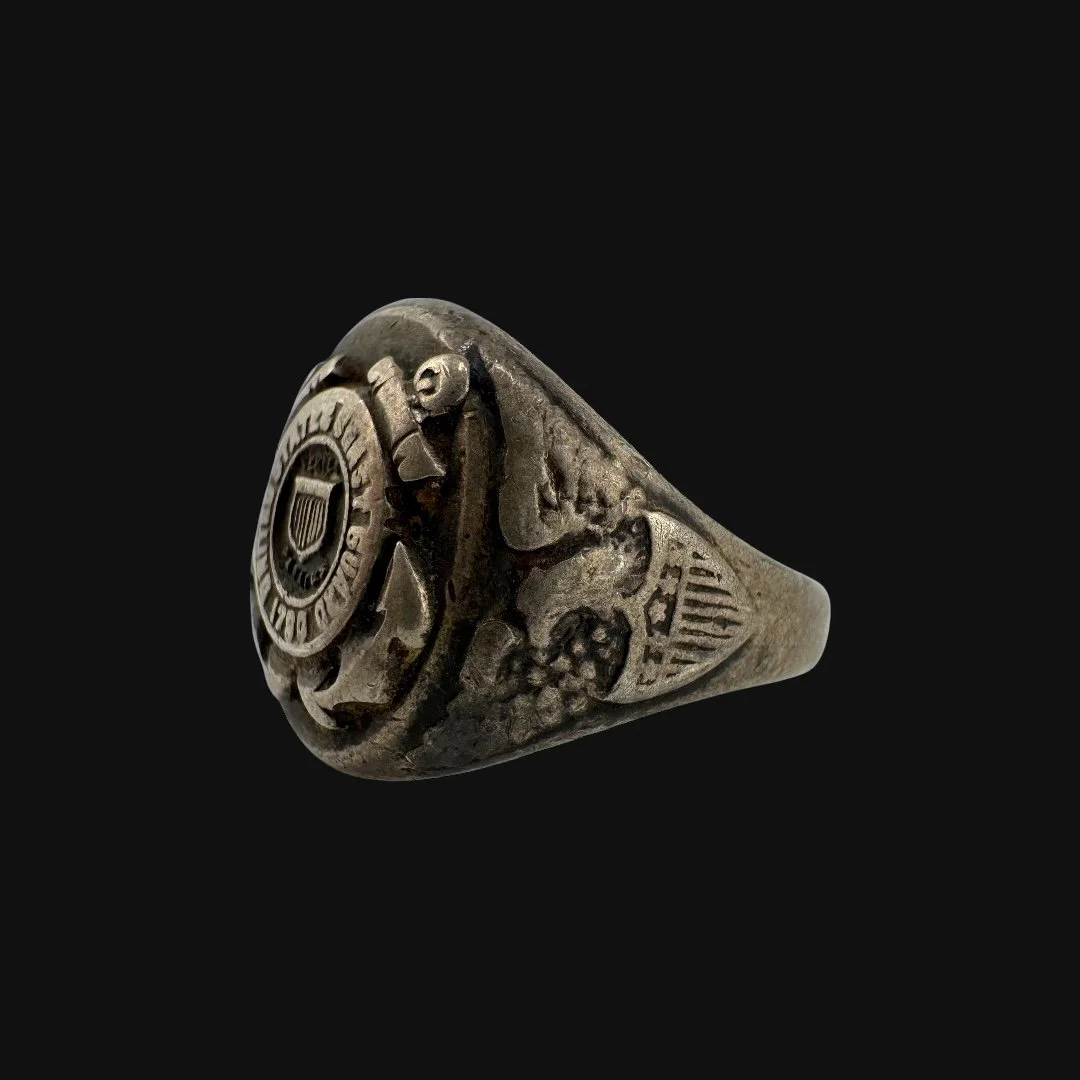 Image 12 of 14
Image 12 of 14

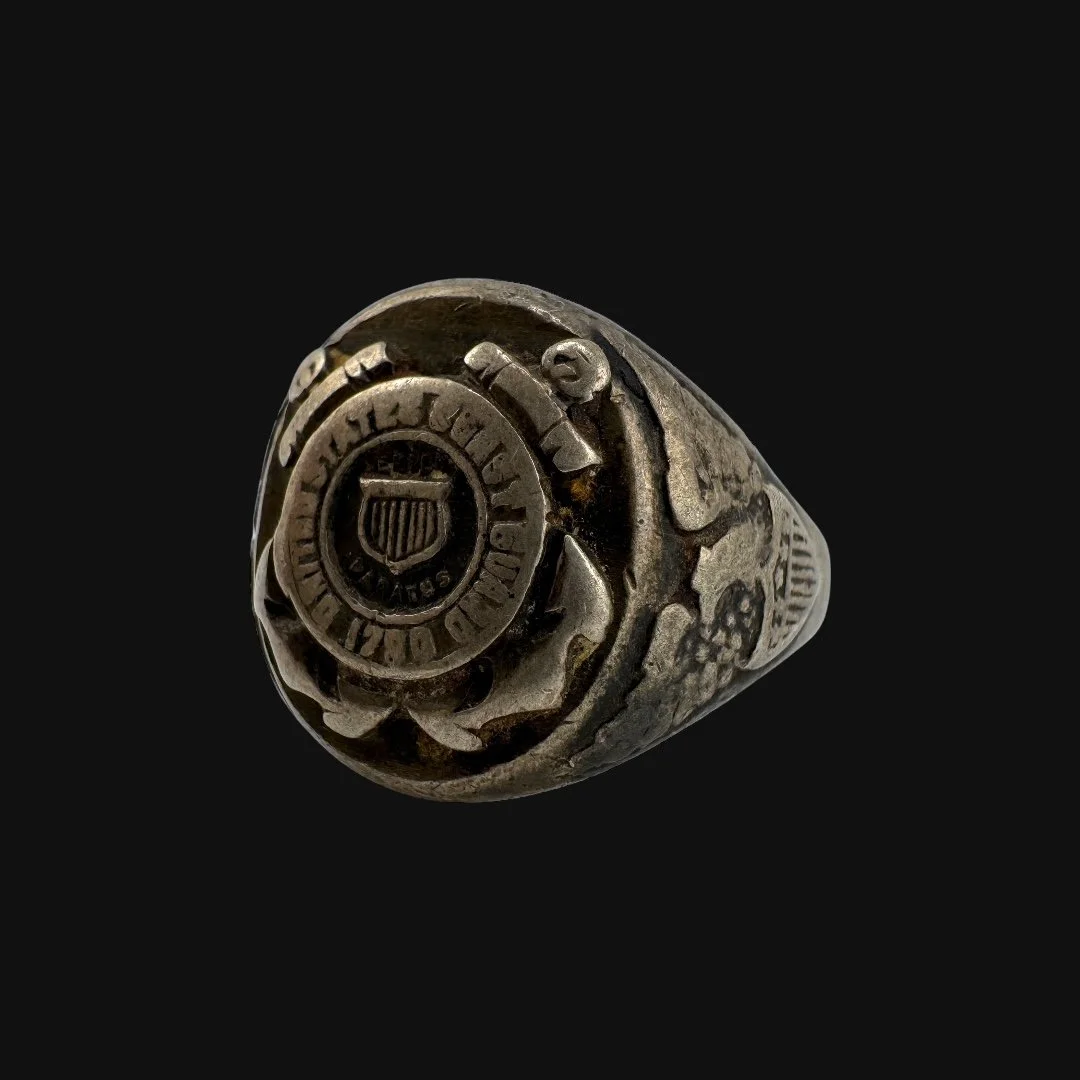 Image 13 of 14
Image 13 of 14

 Image 14 of 14
Image 14 of 14















Original 1942-1945 WWII U.S. Coast Guard “Crossed Anchors Emblem” Sterling Silver Ring (Size 9)
Comes with a hand-signed C.O.A. and a full historical research write-up
From: World War II
Branch: U.S. Coast Guard
Dated: 1942-1945
Ring Size: 9 (US)
Material: Sterling Silver
Wearable History Collection:
This authentic 1942-1945 WWII-era ring, preserved in its original and unaltered condition, combines exceptional craftsmanship with lasting durability, making it fully suitable for modern wear today. As part of our exclusive World War II “Wearable History Ring Collection,” it offers the rare opportunity to own and wear a genuine piece of World War II. Both a timeless accessory and a tangible link to the past, this truly one-of-a-kind ring stands as a wearable tribute to the courage and sacrifice of a generation.
Historical Significance to the United States Coast Guard During World War II:
The United States Coast Guard, transferred from the Treasury Department to Navy control after Pearl Harbor, became an indispensable force in nearly every theater of World War II. Its missions were extraordinarily diverse. In the Battle of the Atlantic, cutters, patrol craft, and Coast Guard–manned Navy ships escorted merchant convoys through U-boat–infested waters, sinking German submarines such as U-175 and U-606 while rescuing thousands from torpedoed ships. The Greenland Patrol maintained weather stations and supply lines vital to transatlantic operations. Domestically, Coast Guardsmen secured ports, patrolled for enemy submarines, and enforced maritime safety.
The service’s most famous wartime contribution was its amphibious expertise. Coast Guardsmen manned and piloted thousands of landing craft during invasions such as Operation Torch, Sicily, Salerno, Anzio, and most notably D-Day at Normandy. At Omaha and Utah Beaches, they braved mines, gunfire, and rough surf to land troops and equipment, with beachmasters directing chaotic landings under fire. In the Pacific, they performed the same feats at Guadalcanal, Tarawa, Saipan, Iwo Jima, and Okinawa, often salvaging disabled craft and clearing obstacles mid-battle. Their work ensured the steady flow of men and supplies onto heavily defended beaches.
Beyond combat landings, the Coast Guard operated weather ships, anti-submarine aircraft patrols, and rescue stations. They escorted ships in the Aleutians, ferried troops across dangerous waters, and guarded against sabotage in U.S. ports. The SPARS program brought women into service, handling communications, intelligence, and administrative work to free men for frontline duty. By war’s end, the Coast Guard had swelled to more than 170,000 personnel, operating thousands of vessels and aircraft worldwide. Its members earned commendations for valor and suffered heavy losses, cementing the Coast Guard’s reputation as a small but indispensable branch whose seamanship, versatility, and courage were critical to Allied victory.
The Legacy Within This Ring:
This authentic World War II United States Coast Guard ring, crafted in sterling silver, was worn by a WWII Coast Guard serviceman whose combat service spanned the defining campaigns of the war. Its face bears the historic Coast Guard emblem, a proud symbol of Semper Paratus, while the side features the eagle and shield, representing vigilance and the defense of the nation’s shores and seas. More than a piece of jewelry, it was a personal emblem of duty, forged during years when the Coast Guard stood at the forefront of convoy protection, amphibious landings, and lifesaving missions in every theater. From braving U-boat–infested waters in the Atlantic to steering landing craft through gunfire at Normandy, Sicily, and Pacific island beaches, Coast Guardsmen carried both courage and skill into battle. This ring marks the quiet heroism of those who safeguarded lives, delivered troops to shore, and ensured the flow of vital supplies across perilous seas. Today it stands as a preserved fragment of wearable Coast Guard heritage, honoring the sacrifice and unity of those who served in the greatest conflict of the 20th century.
Comes with a hand-signed C.O.A. and a full historical research write-up
From: World War II
Branch: U.S. Coast Guard
Dated: 1942-1945
Ring Size: 9 (US)
Material: Sterling Silver
Wearable History Collection:
This authentic 1942-1945 WWII-era ring, preserved in its original and unaltered condition, combines exceptional craftsmanship with lasting durability, making it fully suitable for modern wear today. As part of our exclusive World War II “Wearable History Ring Collection,” it offers the rare opportunity to own and wear a genuine piece of World War II. Both a timeless accessory and a tangible link to the past, this truly one-of-a-kind ring stands as a wearable tribute to the courage and sacrifice of a generation.
Historical Significance to the United States Coast Guard During World War II:
The United States Coast Guard, transferred from the Treasury Department to Navy control after Pearl Harbor, became an indispensable force in nearly every theater of World War II. Its missions were extraordinarily diverse. In the Battle of the Atlantic, cutters, patrol craft, and Coast Guard–manned Navy ships escorted merchant convoys through U-boat–infested waters, sinking German submarines such as U-175 and U-606 while rescuing thousands from torpedoed ships. The Greenland Patrol maintained weather stations and supply lines vital to transatlantic operations. Domestically, Coast Guardsmen secured ports, patrolled for enemy submarines, and enforced maritime safety.
The service’s most famous wartime contribution was its amphibious expertise. Coast Guardsmen manned and piloted thousands of landing craft during invasions such as Operation Torch, Sicily, Salerno, Anzio, and most notably D-Day at Normandy. At Omaha and Utah Beaches, they braved mines, gunfire, and rough surf to land troops and equipment, with beachmasters directing chaotic landings under fire. In the Pacific, they performed the same feats at Guadalcanal, Tarawa, Saipan, Iwo Jima, and Okinawa, often salvaging disabled craft and clearing obstacles mid-battle. Their work ensured the steady flow of men and supplies onto heavily defended beaches.
Beyond combat landings, the Coast Guard operated weather ships, anti-submarine aircraft patrols, and rescue stations. They escorted ships in the Aleutians, ferried troops across dangerous waters, and guarded against sabotage in U.S. ports. The SPARS program brought women into service, handling communications, intelligence, and administrative work to free men for frontline duty. By war’s end, the Coast Guard had swelled to more than 170,000 personnel, operating thousands of vessels and aircraft worldwide. Its members earned commendations for valor and suffered heavy losses, cementing the Coast Guard’s reputation as a small but indispensable branch whose seamanship, versatility, and courage were critical to Allied victory.
The Legacy Within This Ring:
This authentic World War II United States Coast Guard ring, crafted in sterling silver, was worn by a WWII Coast Guard serviceman whose combat service spanned the defining campaigns of the war. Its face bears the historic Coast Guard emblem, a proud symbol of Semper Paratus, while the side features the eagle and shield, representing vigilance and the defense of the nation’s shores and seas. More than a piece of jewelry, it was a personal emblem of duty, forged during years when the Coast Guard stood at the forefront of convoy protection, amphibious landings, and lifesaving missions in every theater. From braving U-boat–infested waters in the Atlantic to steering landing craft through gunfire at Normandy, Sicily, and Pacific island beaches, Coast Guardsmen carried both courage and skill into battle. This ring marks the quiet heroism of those who safeguarded lives, delivered troops to shore, and ensured the flow of vital supplies across perilous seas. Today it stands as a preserved fragment of wearable Coast Guard heritage, honoring the sacrifice and unity of those who served in the greatest conflict of the 20th century.

